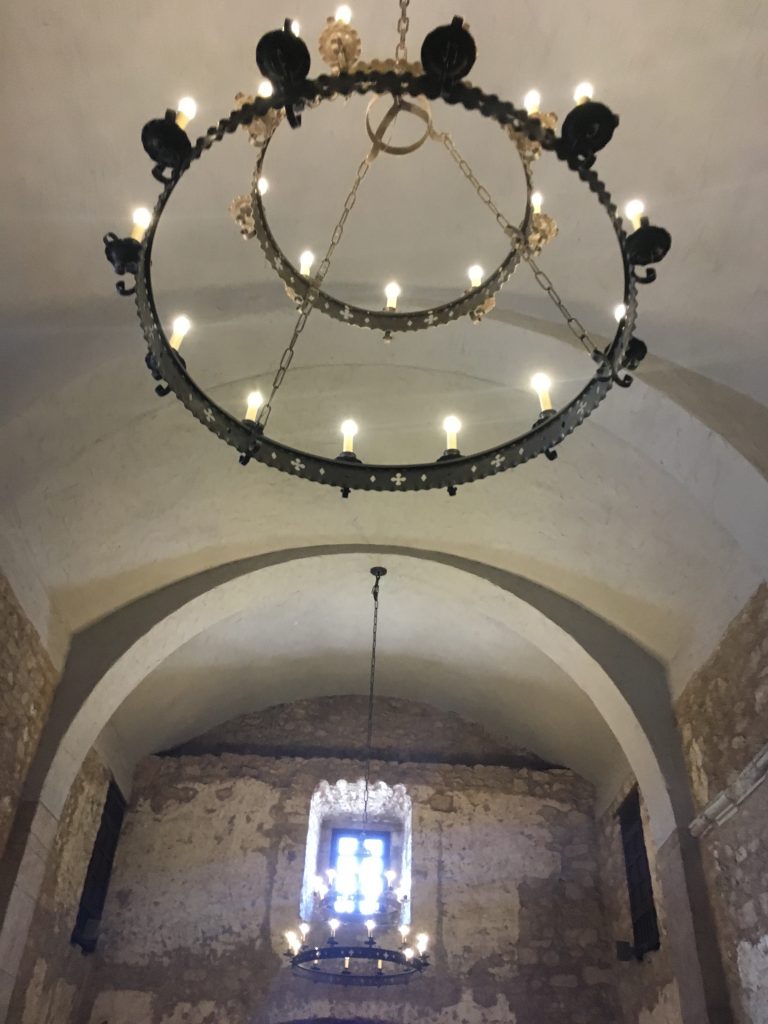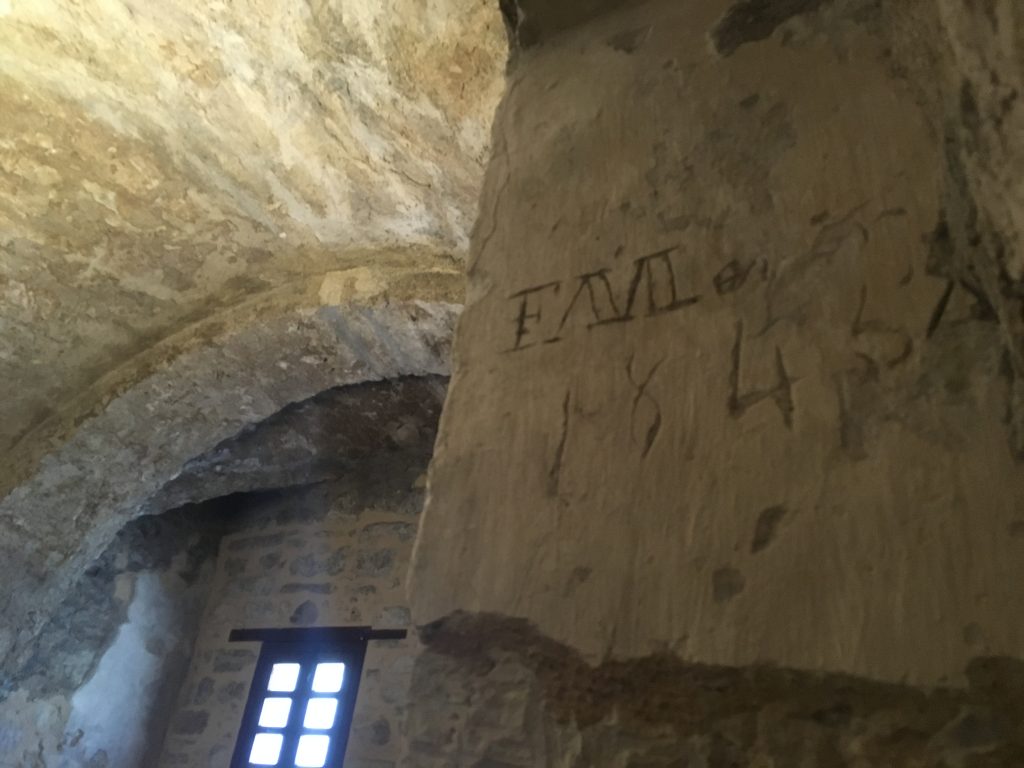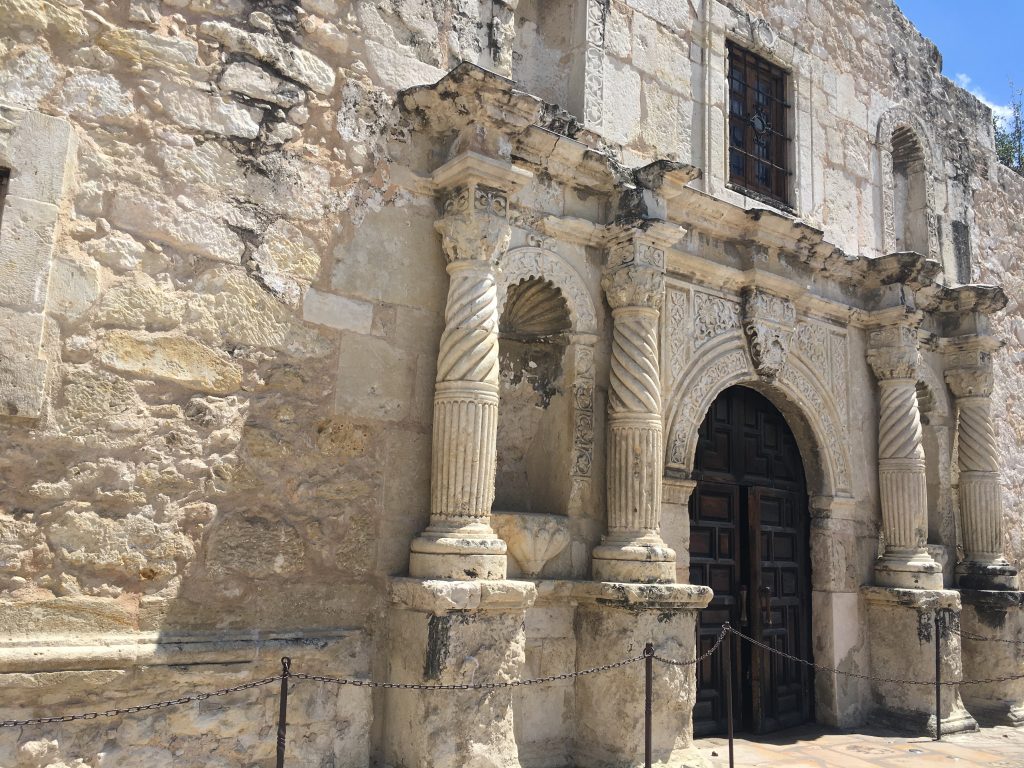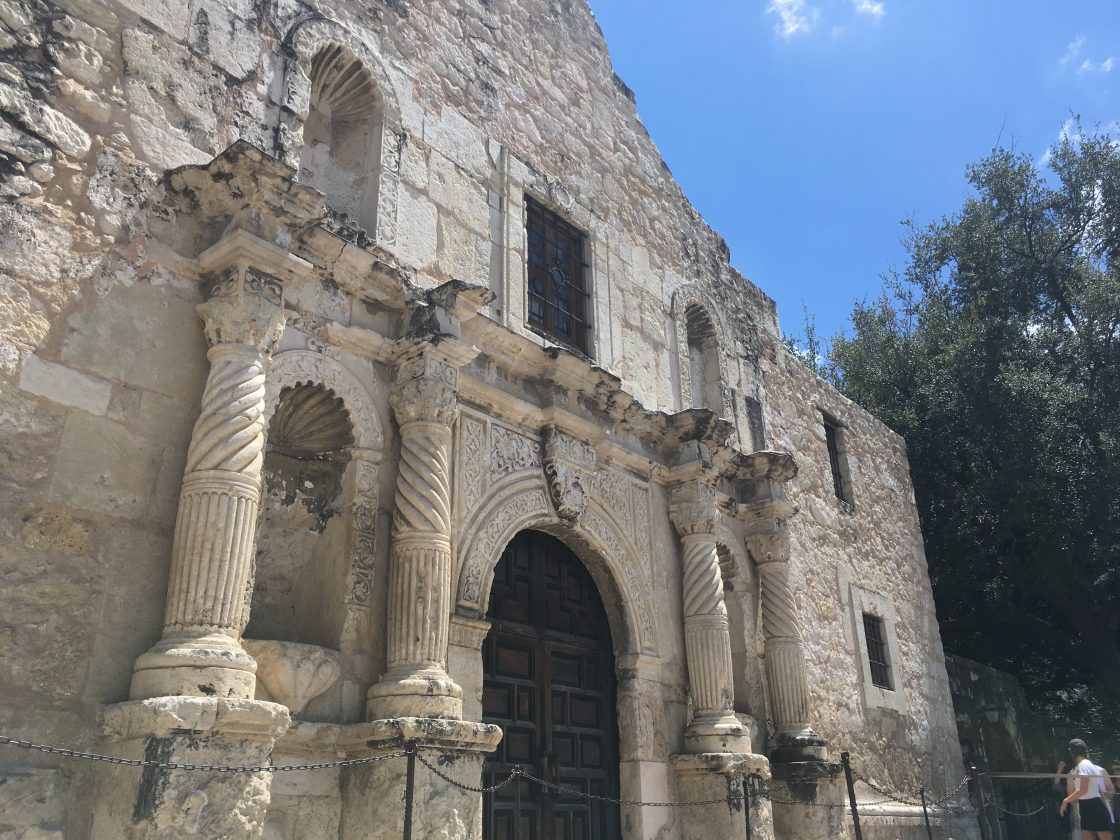I definitely thought it would be bigger. That’s exactly what she said.
Before today everything I knew about the Alamo I learned by watching the animated series King of the Hill, a cartoon comedy about working class Texans and all the curious things they adore and abhor. From armadillos to the Cowboys to steaks and even the Alamo, King represents Lonestar citizens as quirky, narrow-minded but well-intended and stereotypically fanatical about their home state.
I hadn’t realized I was so curious about historic war fort but from the moment I found out I would be in San Antonio for the day I knew I had to see it. Originally a Catholic compound called the Misión San Antonio de Valero, the Alamo is most well known as the place where the Texian Army was defeated and massacred by Santa Anna.

Texas would later win the war against Mexico but the Battle of the Alamo would live on as a evidence of Mexican ruthlessness and a reminder of the virtue of Texas. With this kind of outsized legacy underpinning it, i expected a massive structure that would leave an outsized impression. But it’s small, intimate, low, even cozy. Remembering its roots as a house of God makes the reality of it more easy to grasp.
I have now seen the Alamo and learned many things in a short time. I learned that Davy Crockett probably didn’t take his famous rifle there and that Phil Collins is obsessed with the place. I learned that its’ been renovated and altered many times in the last 300 years and that the city of San Antonio is currently proposing to tear down all the non-historic surroundings to build out more authentic attractions (it is oddly plopped down in the middle of touristy downtown).

I learned that you’re not allowed to photograph the inside (I’ve always been a bit rebellious). I learned that the biracial slave woman said to inspire the famous song “Yellow Rose of Texas” maybe did not. And through learning that I learned that a biracial slave woman was said to have inspired the famous song “Yellow Rose of Texas”. Oh, that kind of yellow. Huh.
I’m glad to have seen the Alamo and don’t challenge its importance in Texas history, but I must say that I find it ironic that a place originated to religiously colonize Native Mexicans – a practice that can be argued to have helped limit the liberty of the colonized – has found its primary glory as a site of martyrdom for the Texian seekers of liberty. One history takes liberty away and another grants it. These are the kinds of irony often ignored by modern history.

Overall I was in and around the stone legend for no more than thirty minutes. And had a wonderful experience, in part thanks to the splendid company of a charming man who would later stand me up for a date before confessing to being married. Of all the things I learned in San Antonio that was definitely the most useful. I will certainly always remember the Alamo.

